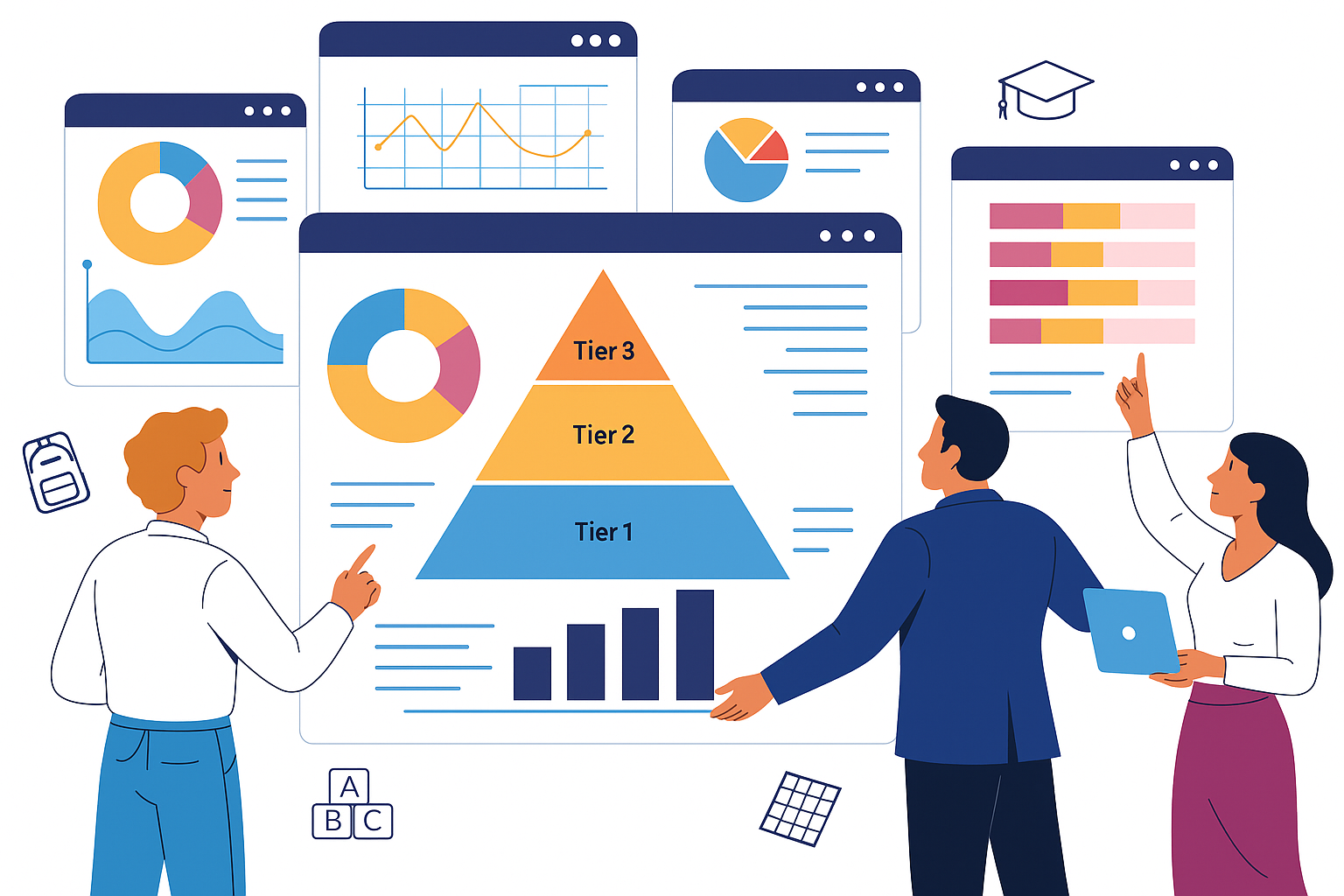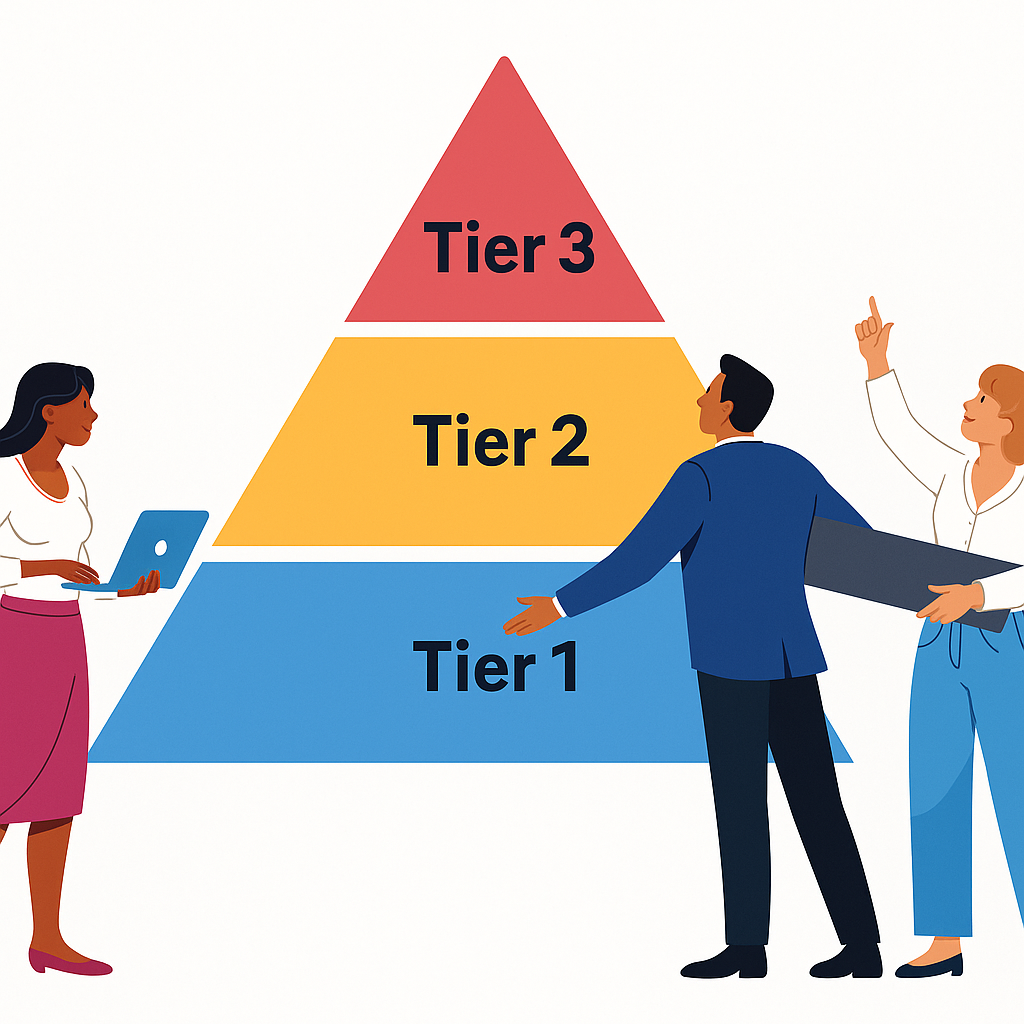5 Ways Principals Can Lead with Data to Strengthen School-Level MTSS

When it comes to Multi-Tiered Systems of Support (MTSS), principals play one of the most critical roles in turning strategy into action. They’re responsible for ensuring every student in their building has access to strong Tier 1 universal supports, targeted Tier 2 interventions, and highly individualized Tier 3 services. But leading MTSS is no small task.
The challenge? Data is everywhere—but often disconnected, delayed, or overwhelming. Without the right tools at the right time, principals are left piecing together reports from multiple systems, making it difficult to spot patterns early, monitor interventions, and communicate results.
That’s where Whole Child Analytics comes in. By unifying academic, behavioral, attendance, and social-emotional learning (SEL) data into one role-based platform, principals gain the visibility they need to lead with confidence. Here are five ways Whole Child Analytics helps school-level MTSS succeed.
1. Empowering Principals to Lead MTSS with Confidence
Principals are both instructional leaders and culture shapers. They’re tasked with ensuring that universal Tier 1 supports meet the needs of all students, while also coordinating Tier 2 and Tier 3 interventions for students who require more targeted or intensive support.
Whole Child Analytics empowers principals with immediate access to the right data—without waiting weeks for reports or sifting through multiple systems. Whether they’re addressing attendance issues, supporting student well-being, or monitoring academic outcomes, principals can see patterns as they emerge and act quickly.
By giving principals this level of visibility, districts ensure building leaders aren’t just managing MTSS—they’re leading it with precision and purpose.
2. Breaking Down Data Silos for Clearer Insights
Most schools juggle a variety of systems: student information systems (SIS), assessment platforms, behavior tracking tools, and SEL surveys, to name a few. Each one has valuable data, but when they’re not connected, principals are left with fragmented pieces of the student experience.
Whole Child Analytics solves this by breaking down silos and pulling all of that information into a single, unified dashboard. Instead of chasing down multiple spreadsheets, principals see the complete picture: academics alongside behavior, SEL alongside attendance, trends alongside interventions.
This centralization reduces the risk of missing early warning signs and helps leaders make decisions that are both timely and holistic.
3. Supporting MTSS Rollouts with Shared Tools and Protocols
One of the biggest challenges in MTSS implementation is ensuring that supports are consistent across schools and departments. Principals, coordinators, and teachers all need to be working from the same playbook.
That’s why Whole Child Analytics is more than just a dashboard—it’s a platform for collaboration.
Rush-Henrietta Central School District is a great example. As part of their MTSS rollout, they are working with Whole Child Analytics to:
- Define clear intervention criteria so everyone knows what qualifies as Tier 1, 2, or 3.
- Build data visuals that principals can use to quickly assess trends.
- Create analysis protocols that ensure consistency across buildings.
- Develop progress monitoring tools together, aligning district-level strategy with school-level action.
By having shared tools and protocols, principals at Rush-Henrietta can be confident that their MTSS practices aren’t just reactive—they are part of a larger, district-wide system of improvement.
4. Driving Tiered Supports with Real-Time Analytics
MTSS works best when decisions are timely. Without real-time insights, interventions often lag behind student needs. Whole Child Analytics helps principals strengthen MTSS at every tier:
- Tier 1 (Universal Supports): Monitor attendance, behavior , and SEL climate across the entire school to identify systemic needs early.
- Tier 2 (Targeted Supports): Group students with similar needs, track progress on small-group interventions, and see what’s working in real time.
- Tier 3 (Individualized Supports): Access comprehensive student profiles—including academic, behavioral, SEL, and even community-based supports—to tailor interventions to each student.
For principals, this means no more guessing whether interventions are effective. The data tells the story, empowering them to adjust strategies quickly and keep supports aligned with student needs.
5. Building a Data-Driven School Culture
Finally, Whole Child Analytics helps principals model a culture of data-driven decision-making. When staff see their principal using dashboards to guide discussions, monitor progress, and celebrate wins, it sets the tone for the entire school.
Dashboards also serve as a shared “source of truth” in MTSS meetings, ensuring teachers, counselors, and coordinators are all looking at the same data. This reduces confusion, builds trust, and creates a stronger sense of collective responsibility for student success.
And beyond the school, principals can use Whole Child Analytics to communicate MTSS outcomes with district leaders, school boards, and families—building transparency and accountability.
Conclusion: Leading MTSS with Whole Child Analytics
MTSS is not just a framework—it’s a commitment to ensuring every student gets the right support at the right time. But without the right data, principals can’t lead this work effectively.
Whole Child Analytics equips principals with the tools to:
- Lead MTSS confidently.
- Break down silos for actionable insights.
- Roll out consistent protocols across schools.
- Drive real-time tiered supports.
- Build a culture of data-driven decision-making.
From prevention at Tier 1 to intensive support at Tier 3, Whole Child Analytics ensures school leaders have the visibility they need to strengthen MTSS at every level.
Next Step:Want to see how districts like Rush-Henrietta are putting Whole Child Analytics into action? Register for the webinar happening today.
%20good%20version.png)


